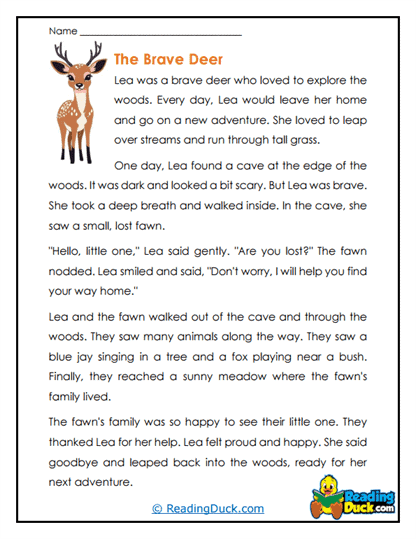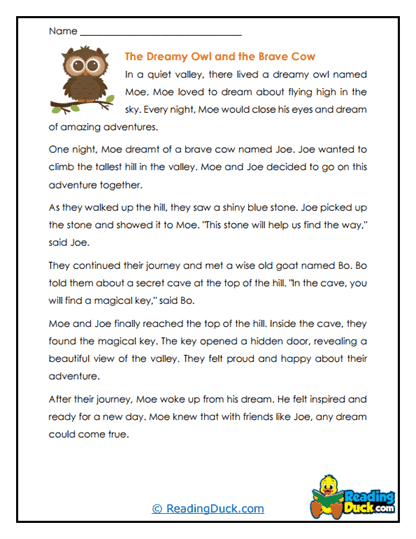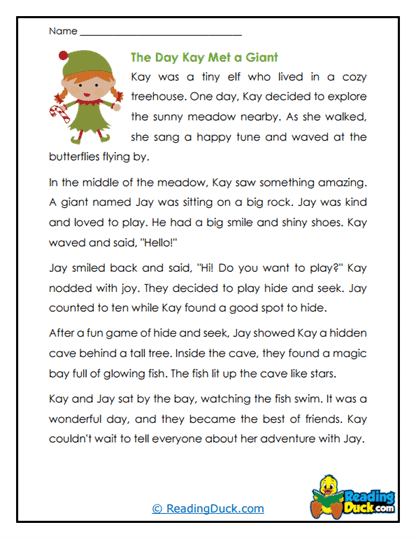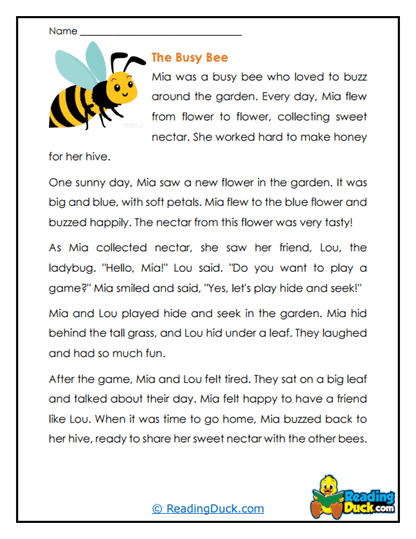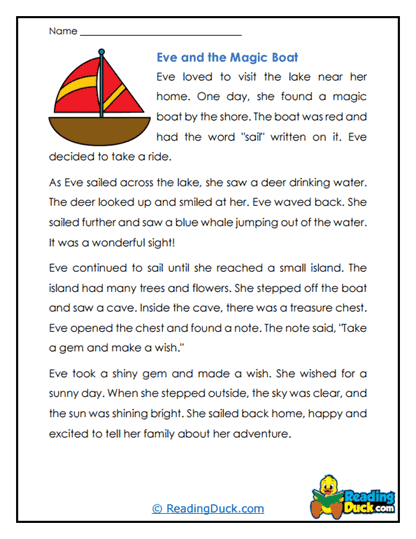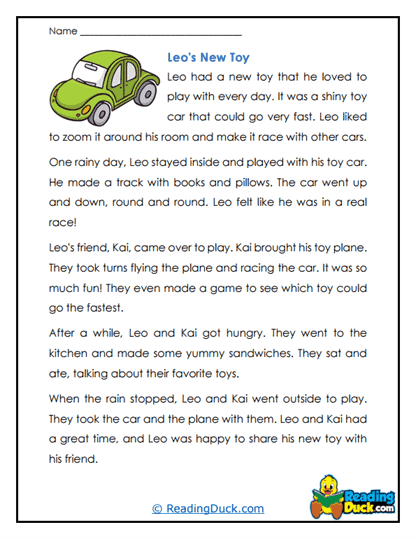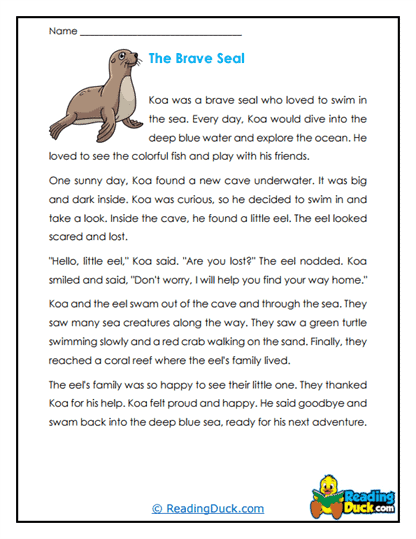CVV Reading Passages Worksheets
About Our CVV Reading Passages Worksheets
Our CVV (Consonant-Vowel-Vowel) Reading Passages Worksheets are carefully designed to help students develop foundational phonics skills and reading fluency by focusing on a key phonetic pattern. In the CVV word structure, a consonant is followed by two vowels that form a specific vowel sound (e.g., “pie,” “sea,” “toe”). These worksheets feature targeted reading passages that allow students to practice decoding CVV words, improving both their word recognition and fluency.
Each worksheet is presented in a convenient PDF format, making it simple to download, print, and use in both classroom and home settings. Every worksheet also includes a downloadable answer key, which provides educators and parents with a quick and easy way to assess student progress. Whether used in a classroom setting or for home practice, the CVV Reading Passages Worksheets are an invaluable resource for supporting students' phonics and literacy development.
Key Features and Benefits of CVV Reading Passages Worksheets
The CVV Reading Passages Worksheets offer several key benefits to students as they practice and master essential phonics patterns. These worksheets provide structured exposure to CVV words, helping students develop confidence in reading longer vowel combinations. Below are some of the most important features and benefits of the collection:
- Targeted Phonics Instruction: These worksheets focus specifically on CVV word patterns, providing repeated practice with words like “tie,” “key,” “boat,” and “blue,” helping students grasp vowel teams and their sounds.
- Improved Word Recognition: As students encounter CVV words in various reading contexts, they begin to recognize these vowel combinations more quickly, enhancing their overall word recognition skills.
- Strengthened Decoding Abilities: With consistent practice decoding CVV words, students learn how vowel pairs work together to create new sounds, improving their ability to break down unfamiliar words.
- Fluency Development: Practicing CVV words in meaningful reading passages helps students build reading fluency by improving both speed and accuracy.
- Contextual Phonics Application: The reading passages offer students the opportunity to apply their phonics knowledge in context, allowing them to see how CVV words function within sentences and larger pieces of text.
These worksheets are perfect for helping students gain the phonics knowledge necessary for reading success and are an important resource for developing early literacy skills.
Integrating CVV Worksheets Into Classroom Instruction
Teachers can seamlessly integrate the CVV Reading Passages Worksheets into their phonics instruction or reading lessons to enhance students’ learning experience. These worksheets can be used in various instructional settings to reinforce specific phonics patterns and improve fluency. Here are some strategies for incorporating these worksheets into daily classroom activities:
- Group Reading Sessions: Use the passages during group reading exercises where students take turns reading aloud. This gives students the opportunity to practice decoding CVV words in a supportive, collaborative environment while improving their oral fluency.
- Phonics Warm-Up: Begin each day’s phonics lesson with a CVV reading passage. This warm-up activity helps students focus on the vowel team pattern and prepares them for more advanced phonics instruction.
- Independent Reading Practice: Assign the worksheets during independent reading time, allowing students to work at their own pace while practicing CVV word recognition and decoding.
- Small Group Instruction: Use the passages during small group reading lessons to provide targeted instruction for students who may need additional support mastering CVV word patterns.
- Ongoing Phonics Review: Incorporate the worksheets into phonics review sessions, ensuring that students receive repeated exposure to CVV word patterns in different contexts.
- Formative Assessment: The included answer keys enable teachers to easily assess students’ progress in decoding CVV words and monitor their improvement in reading fluency over time.
These strategies will help teachers effectively incorporate the CVV Reading Passages Worksheets into their daily lessons, providing students with the phonics practice they need to become proficient readers.
Using CVV Worksheets for Home Practice
The CVV Reading Passages Worksheets are also an excellent tool for parents and caregivers to support their child’s reading development at home. These worksheets provide focused phonics practice that aligns with classroom instruction, helping to reinforce CVV word patterns in a structured way. Here are some practical ways parents can use the worksheets for home practice:
- Daily Reading Practice: Assign one passage each day as part of your child’s reading routine. Encourage them to read the passage aloud to reinforce their understanding of CVV word patterns and improve reading fluency.
- Shared Reading Sessions: Take turns reading passages aloud with your child. This allows them to hear correct pronunciation while practicing their own reading skills, creating a supportive environment for learning.
- Homework Reinforcement: Use the worksheets as supplemental homework to reinforce phonics skills being taught in school. Review the passage together using the answer key, providing immediate feedback and correction as needed.
- Building Fluency Through Repetition: Encourage your child to read the same passage multiple times. Repeated reading helps improve speed, accuracy, and fluency, making them more confident readers.
- Track Progress: Monitor your child’s reading development by noting improvements in their ability to decode CVV words. Celebrate their successes and encourage continued practice.
By incorporating these worksheets into your child’s daily reading routine, you can provide them with valuable phonics practice that supports literacy growth and builds confidence in their reading abilities.
Why Mastering CVV Word Patterns is Essential
CVV word patterns are an important part of early phonics instruction because they introduce students to vowel combinations and how they create specific sounds. Understanding these vowel teams is critical for decoding many common words and improving overall reading fluency. Here’s why mastering CVV word patterns is so essential:
- Introduction to Vowel Teams: CVV words introduce students to vowel teams (e.g., “ai,” “ee,” “oa”) and how two vowels can work together to create a single sound, building a deeper understanding of vowel sounds.
- Broader Vocabulary: Learning CVV patterns expands students’ vocabulary by exposing them to a wider variety of words that include these vowel combinations, which are common in everyday reading.
- Foundation for Advanced Phonics Skills: Mastering CVV word patterns prepares students for decoding more complex words and phonics patterns as they progress in their reading journey.
- Increased Confidence in Decoding: Understanding how to decode CVV words gives students confidence when encountering unfamiliar words, leading to improved reading comprehension and enjoyment.
The CVV Reading Passages Worksheets provide students with the structured practice they need to master these crucial phonics patterns, helping them become stronger, more independent readers.
Supporting Reading Fluency with Regular CVV Practice
Reading fluency is a key component of successful literacy development, and regular practice with CVV words can significantly improve a student’s fluency. Fluent readers can decode text quickly and accurately, leading to better comprehension and overall reading enjoyment. The CVV Reading Passages Worksheets help students develop fluency by giving them consistent opportunities to practice CVV word patterns in context. Here’s how these worksheets support reading fluency:
- Improved Accuracy: Repeated exposure to CVV words helps students recognize and decode these vowel teams with greater accuracy, leading to smoother reading.
- Increased Reading Speed: Fluency involves both accuracy and speed. As students become more familiar with CVV words, their reading speed increases naturally.
- Enhanced Comprehension: When students can read more fluently, they can focus on understanding the meaning of the text, rather than getting stuck on individual words. Practicing CVV words in connected text helps support both fluency and comprehension.
By using the CVV Reading Passages Worksheets regularly, students can build the fluency needed for advanced reading and comprehension.
Tips for Maximizing the Effectiveness of CVV Worksheets
To get the most out of the CVV Reading Passages Worksheets, educators and parents can follow these tips to ensure students benefit from the phonics practice they provide:
- Set Clear Goals: Before using the worksheets, establish clear learning goals, such as improving decoding accuracy or increasing reading fluency with CVV words.
- Encourage Repetition: Repeated practice is essential for mastering phonics patterns. Have students read the passages multiple times to reinforce their understanding of CVV word structures.
- Integrate into Homework: Assign the worksheets as part of regular homework to ensure students are practicing phonics skills consistently, even outside the classroom.
- Monitor Progress: Use the answer keys to assess students' progress and offer feedback, celebrating improvements in decoding and fluency.
- Use in Literacy Centers: Incorporate the worksheets into classroom literacy centers where students can practice independently or with peers.
By following these strategies, teachers and parents can maximize the benefits of the worksheets and help students become more proficient readers.
Conclusion
The CVV Reading Passages Worksheets are a vital resource for developing phonics skills and building reading fluency. With a focus on CVV word patterns, these worksheets provide targeted practice that helps students improve decoding, word recognition, and overall fluency. Available in PDF format with easy-to-use answer keys, the worksheets are perfect for both classroom and home use.
By regularly practicing with these worksheets, students will develop the phonics skills and reading fluency they need to succeed in reading more advanced texts. This collection is an essential tool for helping students grow into confident, capable readers.
